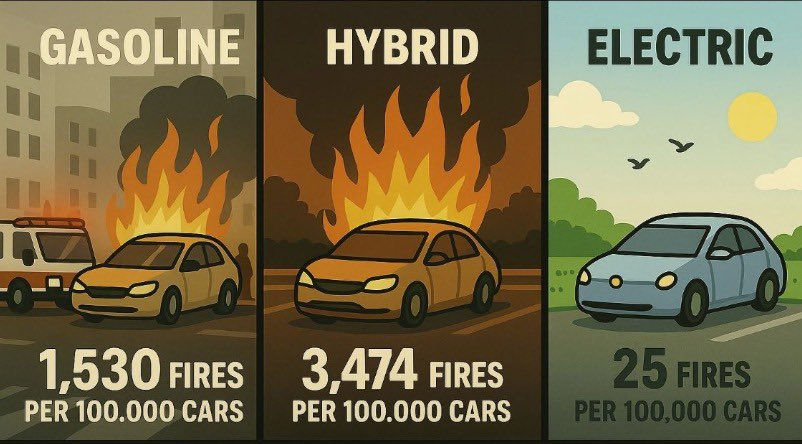Fire Risks and Safety Concerns in Electric Vehicles
- Hakan Doğu

- Jul 18
- 1 min read

Data from insurance studies indicate that electric vehicles (EVs) have fewer fire incidents compared to internal combustion engine (ICE) vehicles. However, while fatal accidents caused by fires are almost nonexistent in ICE vehicles, such incidents occasionally occur with EVs. Currently, detailed statistics explaining this fully are not yet available.
Since EVs are still mostly passenger cars, their fire risk is lower, but other risks remain important to consider:
1. Difficulty in Extinguishing Fires
When an EV catches fire, it is much more difficult to extinguish, often resulting in the vehicle burning completely. Even after the fire is put out, there is a risk of reignition when the vehicle is moved to a garage, so vehicles are often quarantined for a period of time.
2. a) Door Locking and Inability to Exit:
Most EVs have electronically controlled door mechanisms. In some accidents, doors have been observed to lock during a fire, preventing occupants from escaping, which is a significant safety concern.
b) Different Nature of Fires: EV fires spread rapidly, release toxic gases, and can cause loss of consciousness for drivers. The temperatures reached are extremely high; for example, a Tesla Cybertruck crash in Bytown, USA last year recorded temperatures of 2,760°C.
3. Rescue Operations Are Hazardous:
EVs operate on high-voltage systems (400/800V) compared to ICE vehicles (typically 12V). This creates a high risk of electric shock for rescue personnel. Without thorough training, rescue operations become very difficult.
Given these risks, choosing EVs with manual door handles may be a safer option. Additionally, whether firefighters and rescue teams receive adequate training on these issues is questionable. Authorities should approach this matter with great sensitivity.



Comments